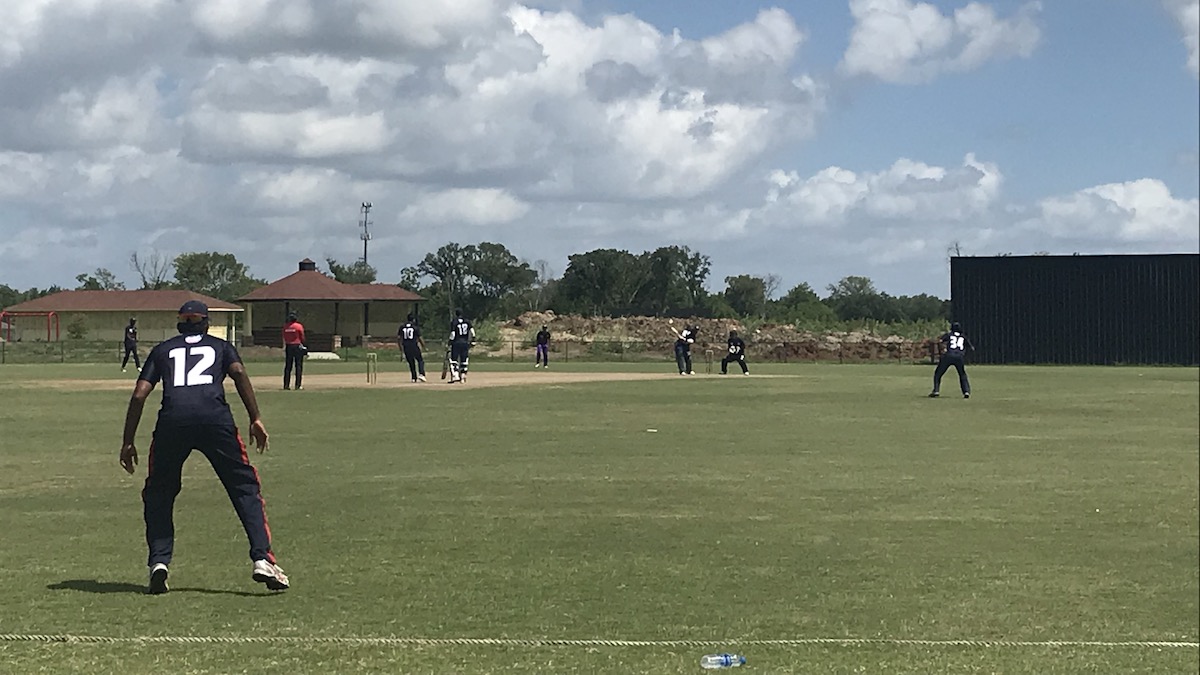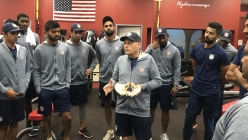A Culture Change in USA Cricket
2018 Aug 06 by DreamCricket USA

...slowly and almost imperceptibly to those outside the inner sanctum, a change has been taking place within the High Performance program at USA Cricket.
By Jamie Paul Lloyd
Team culture is a concept often talked about in sports, and although it is widely understood that said culture can have tremendous influence on a team and organization, there is often very little work done to deliberately shape it. Left to itself, team/organization culture will often tend towards the lowest common denominator, and it could be argued that this has been the case within cricket in the United States for decades. Not necessarily an overtly negative culture, nor anything insidious, but rather a laissez faire approach that has helped contribute to some disappointing results by our national teams, and has seen cricket entrenched as a niche sport, and nothing more than a curiosity to the wider public.
But, slowly and almost imperceptibly to those outside the inner sanctum, a change has been taking place within the High Performance program at USA Cricket. It’s a culture shift that has ramifications for the entire organization, and perhaps more importantly, for the wider cricket community in this country.
The catalyst for this change was the appointment of Pubudu Dassanayake as national team coach in September of 2016. A man who has forged a reputation for facilitating positive change and creating a winning culture within his sides, firstly leading Canada to the 2011 Cricket World Cup, and more recently helping steer Nepal on their upward trajectory through the World Cricket League rankings. A year after Dassanayake took the reigns, Ibrahim Khaleel succeeded Steven Taylor as the captain of the side. The move shocked some, but together these two men, along with USA Cricket’s Wade Edwards, the selection committee headed by Ricardo Powell, and team manager Kerk Higgins, are driving this new team culture.
Central to this culture shift is a ‘team-first’ mentality, backed by a set of team rules and disciplines that reflect a profound respect for the Spirit of Cricket, and all undergirded by personal responsibility and peer accountability. The players themselves have played a big part in the formulation of the team rules and disciplines, which has ensured an environment of ownership and empowerment. Each individual is recognized as an equally important part of the team. Everyone’s opinion is valued.
“We try to collect good people, encourage them to take risks, and be bold," team owner Robert Kraft says of the New England Patriots. Where other NFL teams seem to struggle from time to time with internal division, the Patriots try to get people to "check their ego at the door".
The New Zealand All Blacks, arguably the most successful sports team on the planet with a win ratio approaching 90%, have had the evolution of their culture in recent times documented in the best-selling book “Legacy”. The book speaks of humility, character, continual improvement, staying grounded, and of leaving the famous black jersey in a better place after you have had the privilege and responsibility of wearing it.
The Patriots and All Blacks, just two examples of sporting teams that point to their culture as huge drivers of their success. So can we now expect the USA cricket team to start ascending the world rankings? Will this new team culture see them rapidly progress towards ODI status? Certainly this cultural shift within the team itself is a positive move that will surely reap rewards. However, there are additional factors at play with both the All Blacks and the Patriots, and also with the likes of the Irish and Afghanistan cricket teams, which both recently graduated to full-member status, a rapid ascent that USA Cricket hopes to emulate.
In New Zealand, Super Rugby coaches work closely with the All Blacks coaches to ensure there is continuity of purpose for domestic players who graduate to the highest level. And rugby fans across the small south pacific nation are fiercely proud of their national side, win or lose, and support them with a fervour that borders on obsession.
In Ireland recently over 19,000 people turned up at Malahide over two days to see their National team compete against India in a couple of T20s. They were there to cheer on their team, not the star-studded Indian side.
For the Patriots, they are at the top end of a football system in America that is wholly geared towards creating NFL players. The training regimens of the NFL stars who make millions of dollars, are not so different from the college players who don’t earn a cent.
It seems that for a National or Pro-Franchise team to be truly successful, the positive culture must be in some part endemic to their entire sports community.
When the USA Cricket national players head back to their local teams and leagues, it is imperative that the principles and disciplines now guiding #TeamUSA get passed on to those at club level. Let’s be honest, ‘principles’ and ‘disciplines’ are not words synonymous with club cricket in this country. But if we really do desire to see cricket in the United States grow, both in numbers and in quality, then we need a culture seachange across the board. The change is happening within the new national governing body, but what can the rest of us do to contribute?
Do we have a ‘team first’ mentality? Are we adhering to the most basic of disciplines at club level, like pride in our appearance, being punctual, respecting our team-mates and the opposition? As players do we train like we mean it, and work as hard on our fitness and fielding as we do batting and bowling? As administrators and officials, are we striving to improve our performance and our facilities, are we looking for ways to improve the local cricket experience for players, families and fans? As members of the United States cricket community are we supporting local and grass-roots cricket initiatives, are we members of our local and national organizations, do we volunteer, do we donate, do we vote? As fans do we passionately support our U.S. teams?
Each of us individually and as a collective must embody the change.




